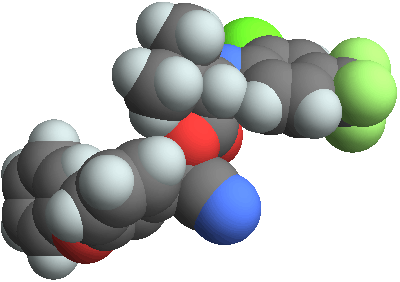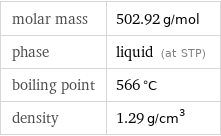Input interpretation

fluvalinate
Chemical names and formulas
![formula | C_26H_22ClF_3N_2O_3 name | fluvalinate IUPAC name | [cyano-(3-phenoxyphenyl)methyl] 2-[[2-chloro-4-(trifluoromethyl)phenyl]amino]-3-methyl-butanoate alternate names | apistan | mavrik aquaflow | minadox mass fractions | C (carbon) 62.1% | Cl (chlorine) 7.05% | F (fluorine) 11.3% | H (hydrogen) 4.41% | N (nitrogen) 5.57% | O (oxygen) 9.54%](../image_source/bbfd04072a95fb615f30151ea05e5243.png)
formula | C_26H_22ClF_3N_2O_3 name | fluvalinate IUPAC name | [cyano-(3-phenoxyphenyl)methyl] 2-[[2-chloro-4-(trifluoromethyl)phenyl]amino]-3-methyl-butanoate alternate names | apistan | mavrik aquaflow | minadox mass fractions | C (carbon) 62.1% | Cl (chlorine) 7.05% | F (fluorine) 11.3% | H (hydrogen) 4.41% | N (nitrogen) 5.57% | O (oxygen) 9.54%
Lewis structure

Draw the Lewis structure of fluvalinate. Start by drawing the overall structure of the molecule, ignoring potential double and triple bonds: Count the total valence electrons of the carbon (n_C, val = 4), chlorine (n_Cl, val = 7), fluorine (n_F, val = 7), hydrogen (n_H, val = 1), nitrogen (n_N, val = 5), and oxygen (n_O, val = 6) atoms: 26 n_C, val + n_Cl, val + 3 n_F, val + 22 n_H, val + 2 n_N, val + 3 n_O, val = 182 Calculate the number of electrons needed to completely fill the valence shells for carbon (n_C, full = 8), chlorine (n_Cl, full = 8), fluorine (n_F, full = 8), hydrogen (n_H, full = 2), nitrogen (n_N, full = 8), and oxygen (n_O, full = 8): 26 n_C, full + n_Cl, full + 3 n_F, full + 22 n_H, full + 2 n_N, full + 3 n_O, full = 324 Subtracting these two numbers shows that 324 - 182 = 142 bonding electrons are needed. Each bond has two electrons, so in addition to the 59 bonds already present in the diagram add 12 bonds. To minimize formal charge oxygen wants 2 bonds, nitrogen wants 3 bonds, and carbon wants 4 bonds. Identify the atoms that want additional bonds and the number of electrons remaining on each atom: Fill in the 12 bonds by pairing electrons between adjacent highlighted atoms. Note that the six atom rings are aromatic, so that the single and double bonds may be rearranged: Answer: | |
3D structure

3D structure
Basic properties

molar mass | 502.92 g/mol phase | liquid (at STP) boiling point | 566 °C density | 1.29 g/cm^3
Units

Liquid properties (at STP)

density | 1.29 g/cm^3 vapor pressure | 8×10^-13 mmHg (at 25 °C)
Units

Thermodynamic properties

molar heat of vaporization | 85 kJ/mol specific heat of vaporization | 0.169 kJ/g (at STP)
Chemical identifiers

CAS number | 69409-94-5 PubChem CID number | 50516 SMILES identifier | CC(C)C(C(=O)OC(C#N)C1=CC(=CC=C1)OC2=CC=CC=C2)NC3=C(C=C(C=C3)C(F)(F)F)Cl InChI identifier | InChI=1/C26H22ClF3N2O3/c1-16(2)24(32-22-12-11-18(14-21(22)27)26(28, 29)30)25(33)35-23(15-31)17-7-6-10-20(13-17)34-19-8-4-3-5-9-19/h3-14, 16, 23-24, 32H, 1-2H3 RTECS number | YV9397100
Safety properties

flash point | 296 °C
Toxicity properties

RTECS classes | agricultural chemical and pesticide | reproductive effector | primary irritant